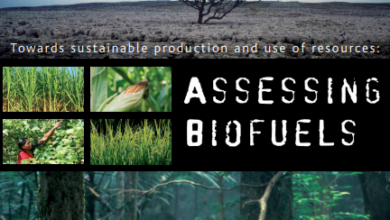Tribe’s Office of Natural Resources joins partners to protect water, enhance quality

This article appeared in the April 2023 edition of the Chickasaw Times
To be a better steward of the environment, the Chickasaw Nation established the Office of Natural Resources. The office works with scholars, development planners, city leaders and other organizations to identify water resource needs of southern Oklahoma communities.
The staff takes a scientific approach in addressing environmental concerns while weighing the needs for future economic and population growth.
The Chickasaw Nation created the Office of Natural Resources in 2018. The office helps manage natural resources within the Chickasaw Nation, mostly concerning water resources. The office was created in response to a 2016 water rights agreement among the Chickasaw and Choctaw Nations, state of Oklahoma and Oklahoma City.
This pact, called the Water Unity Agreement, resolved broad questions of water rights ownership and regulatory authority concerning waters of the Chickasaw and Choctaw Nations’ treaty territories.
With the finalization of this agreement, the Chickasaw Nation determined a dedicated entity within the tribe was needed to assess environmental needs for itself, along with the communities residing within its tribal boundaries.
The Chickasaw Nation Office of Natural Resources addresses those needs.
“The Water Unity Agreement establishes how the Chickasaw and Choctaw Nations manage water resources, Chickasaw Nation Director of Natural Resources Kristopher Patton said.
“The Water Unity Agreement was the purpose for the establishment of the Chickasaw Nation Office of Natural Resources. Our duty is to proactively manage water resources to ensure the sustainability of the resources for future generations.”
The office has created working relationships with dozens of local, state and federal organizations over the years. These include the U.S. Army Corps of Engineers, the U.S. Bureau of Reclamation, the U.S. Geological Survey, East Central University and the Oklahoma Conservation Commission.
The Office of Natural Resources, Mr. Patton said, had implemented many important projects. Collaborating with the Choctaw Nation, the Chickasaw Nation Office of Natural Resources produced the “Oka Holisso: Chickasaw and Choctaw Water Resource Planning Guide” (Oka Holisso).
“The first major project the office of natural resources completed was developing a water atlas,” Mr. Patton said. “Oka Holisso is the ‘water book’ for the Chickasaw and Choctaw Nations. The atlas allows us to gauge all of our water resources, for both surface and groundwater.”
Oka Holisso — which means “water book” or “water atlas” in Chickasaw — took years to complete. Oka Holisso is a comprehensive resource detailing the policies, agreements, research and analysis that affect the waters within the Chickasaw and Choctaw Nations. The book gives information for each of the 30 recognized surface water planning basins in the area.
The science-based water atlas was built on existing information provided by many resources within the state. Additional studies and research were conducted to provide the most up-to-date information available.
Oka Holisso is used when implementing water management and planning. This resource is a guide used by scientists, planners, and community and business leaders when balancing economic choices with other needs.
“While you can’t put a cultural value on water resources, we can establish an economic level or value,” Mr. Patton said. “Take the Blue River for example. We partnered with the state of Oklahoma and the Choctaw Nation to complete a study of the river’s economic value.
“That study showed that the Blue River provides a $1.5 billion product every year within the Chickasaw and Choctaw Nations. Those flowing waters within the Blue River increase the value of land and allow the city of Durant a source of water. It is extremely important that the river is protected for use by everyone.”
Diverse industries and communities within the state share limited water resources. Ecotourism, mining, agriculture and energy companies are just a few of the industries relying on sustainable water. Oka Holisso helps identify how these entities can share this limited resource while working together to maintain the health of the lakes, streams, rivers and aquifers within the Chickasaw Nation.
“We are all in this together,” Mr. Patton said. “We all have to have water. Water is life.”
The Chickasaw Nation Office of Natural Resources conducts hydrologic research and studies that support the long-term activities of local water planning organizations. Current initiatives aim to augment local water supplies, improve water and wastewater infrastructure, mitigate water quality problems, restore watersheds, strengthen data collection, and adapt to climate change.
Working alongside its many collaborators, the office is involved in developing drought contingency plans. These plans focus on water conservation, water supply security and drought resiliency for communities within the Chickasaw Nation.
With direction from the Environmental Protection Agency (EPA), a Memorandum of Understanding (MOU) has been developed between the Chickasaw Nation and the EPA. The MOU enables the Office of Natural Resources to work directly with the EPA to develop research strategies that provide sustainable management of regional resources.
The MOU paved the way for the Office of Natural Resources to conduct water evaluations and planning activities within the Arbuckle Simpson Aquifer area, and enabled the Chickasaw Nation to work with the EPA to promote technical coordination between the two. The MOU allows access to one another’s facilities, including the renowned Robert S. Kerr Environmental Research Center in Ada, Okla.
The MOU aids both the Chickasaw Nation and the EPA. Their joint efforts improve community health, meet environmental protection goals and provide sustainable resources for future generations.
Municipal water supply systems are important to environmental sustainability and for future growth. Community water evaluations and planning activities provided by the office natural resources have allowed the Chickasaw Nation to apply federal American Rescue Plan Act (ARPA) funds to be used within communities where water infrastructure improvement is needed.
American Rescue Plan Act enhances Chickasaw Nation quality of life
From historic cross-deputation agreements among law enforcement agencies to joint infrastructure projects — including state-of-the-art fiber optics, and road and bridge construction — with the Chickasaw Nation at the municipal, county, state and federal levels have helped Oklahoma progress.
The work done within the Office of Natural Resources is a continuation of these collaborations. Using data created within the office, the Chickasaw Nation and development planners in the region are using information published in Oka Holisso to make funding decisions concerning water infrastructure projects, including future projects made available through American Rescue Plan Act (ARPA) funding.
“ARPA funds are federal dollars targeted to tribes and states to assist with community water and wastewater infrastructure rehabilitation,” Mr. Patton said.
“Using these funds, the Chickasaw Nation and the state of Oklahoma have engaged in providing these communities with projects that will make generational changes for water (sources) and wastewater treatment.”
The ARPA federal stimulus bill is being employed to aid public health and economic recovery necessary due to the COVID-19 pandemic. The $1.9 trillion bill provided local, state, territorial and tribal governments $350 billion in emergency funding.
According to the U.S. Department of the Interior, ARPA is the largest investment of resources into Indian Country in U.S. history. Signed into law in 2021, the plan provided nearly $2 billion in relief to First Americans and Alaska Native governments. ARPA made changes to laws to provide emergency supplemental funding in response to the ongoing COVID-19 pandemic.
ARPA funds received by the Chickasaw Nation have been used for various programs within the tribe. These include combating the spread of the COVID-19 virus through public health programs, providing Chickasaw citizens with direct economic relief and investing in various long-term infrastructure projects within the Chickasaw Nation.
Along with local and state funds provided by ARPA, the Chickasaw Nation has also earmarked some of its ARPA funds for water projects.
“The Arbuckle-Simpson Aquifer, a major water source for the region, provides for 150,000 citizens,” Mr. Patton said. “They are not all tribal citizens. They are community citizens. The mission of the Office of Natural Resources is to protect this and other resources for the betterment of everyone.”
The cities of Ada, Ardmore, Durant, Sulphur and Tishomingo, and the Lake of the Arbuckles, receive water from the Arbuckle-Simpson Aquifer or its emanating springs and streams.
The Office of Natural Resources is currently engaged with many local communities regarding current and future water infrastructure projects. Many of these are located in Johnston County. Project sites include the towns of Tishomingo, Mill Creek and Lone Grove.
These projects include a project to develop an alternative water supply in Tishomingo. This project will allow Tishomingo access to groundwater from the Arbuckle Simpson Aquifer. Pennington Creek is currently Tishomingo’s sole water source.
This alternative water source will provide Tishomingo water during significant periods of drought or other events that impact Pennington Creek. Funding was also secured for Murray State College to tap into the new water treatment plant.
Along with this new source of fresh potable water, Tishomingo, the Chickasaw Nation and the state of Oklahoma are collaborating to build a new wastewater treatment plant for the area.
Also in Johnston County, the tribe is collaborating with Mill Creek to upgrade its water infrastructure system. Funds are being used to rehabilitate existing well systems, along with identifying locations for and drilling of a new well.
The Chickasaw Nation is also engaged in water supply development with Wapanucka, Okla. The tribe is assisting city leaders in selecting a potential new well site for drilling and developing a municipal water well.
ARPA funds are not the only federal funds provided to the Chickasaw Nation and its communities to be used for water development projects.
According to Mr. Patton, developing sustainable drought-resilient water supplies is key to community economic prosperity within Oklahoma. The U.S. Department of Commerce and the U.S. Department of Agriculture Rural Development provide additional grants and low interest loans to be used for past and future projects.


